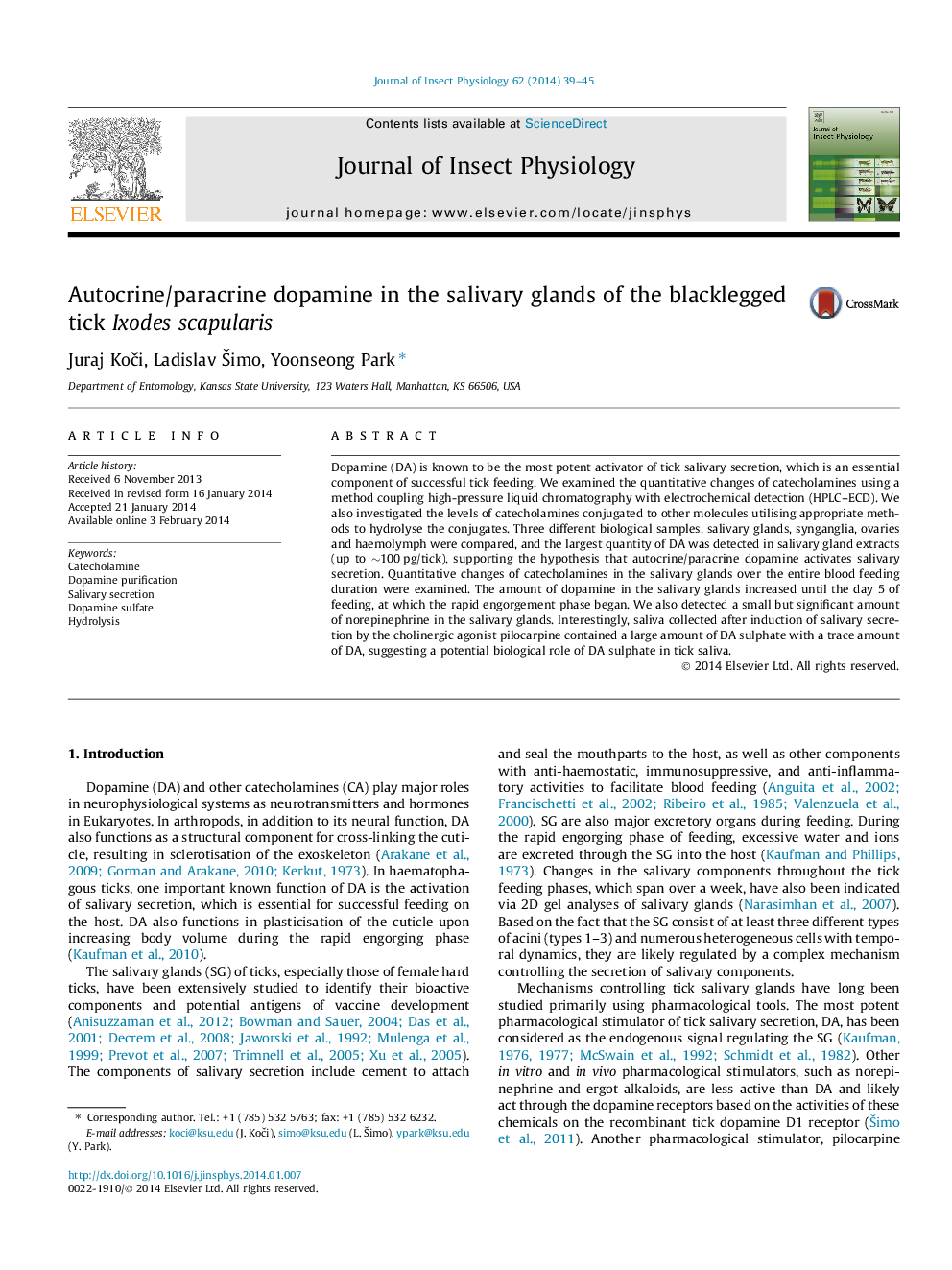| کد مقاله | کد نشریه | سال انتشار | مقاله انگلیسی | نسخه تمام متن |
|---|---|---|---|---|
| 5921695 | 1571008 | 2014 | 7 صفحه PDF | دانلود رایگان |

- Large quantity of dopamine was detected in the tick salivary glands.
- Autocrine/paracrine action of dopamine for salivary secretion is supported.
- Tick salivary secretion contains a large amount of dopamine sulphate.
Dopamine (DA) is known to be the most potent activator of tick salivary secretion, which is an essential component of successful tick feeding. We examined the quantitative changes of catecholamines using a method coupling high-pressure liquid chromatography with electrochemical detection (HPLC-ECD). We also investigated the levels of catecholamines conjugated to other molecules utilising appropriate methods to hydrolyse the conjugates. Three different biological samples, salivary glands, synganglia, ovaries and haemolymph were compared, and the largest quantity of DA was detected in salivary gland extracts (up to â¼100Â pg/tick), supporting the hypothesis that autocrine/paracrine dopamine activates salivary secretion. Quantitative changes of catecholamines in the salivary glands over the entire blood feeding duration were examined. The amount of dopamine in the salivary glands increased until the day 5 of feeding, at which the rapid engorgement phase began. We also detected a small but significant amount of norepinephrine in the salivary glands. Interestingly, saliva collected after induction of salivary secretion by the cholinergic agonist pilocarpine contained a large amount of DA sulphate with a trace amount of DA, suggesting a potential biological role of DA sulphate in tick saliva.
Journal: Journal of Insect Physiology - Volume 62, March 2014, Pages 39-45